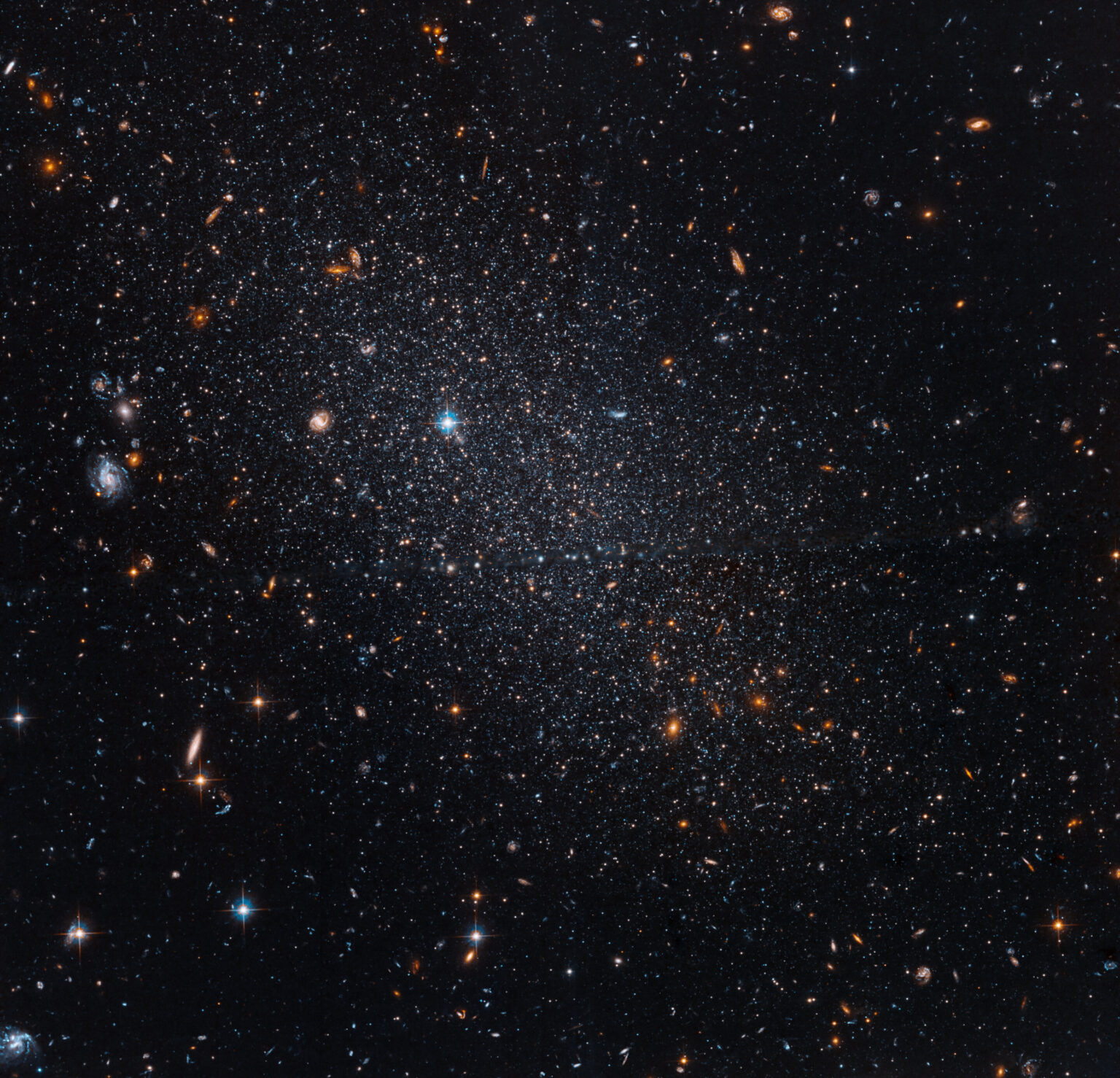The Hubble Space Telescope has photographed a dwarf galaxy in the constellation Tucana. It is 3.6 million light-years away. Although this star system is gravitationally bound to the Local Group, it is not a companion to any of the major galaxies.

Dwarf galaxy in the Local Group
In this new image obtained by NASA’s Hubble Space Telescope, a scattering of stars faintly glows more than 3 million light-years away. This dwarf galaxy, known as the Tucana Dwarf because of its location in the constellation of the same name. It is a loose cluster of aging stars at the far edge of the Local Group, a gravitationally bound group that includes the Milky Way.
The Tucana Dwarf was discovered in 1990 by R. J. Lavery, the same year Hubble was launched. Two things distinguish this system from other similar objects: its classification and its isolation. It is much smaller in size and luminosity than most other spherical dwarf galaxies. Its dust is sparse, and its stellar population is shifted toward older stars, giving them a dim appearance.
The Tucana Dwarf is about 3.6 million light-years away from the center of mass of the Local Group, far from the Milky Way and other galaxies. It is just one of two dwarf spheroidal galaxies in the Local Group that is so far away that it leads astronomers to suggest that a collision with a larger galactic neighbor called Andromeda set it back about 11 billion years ago.
“Cosmic fossil” in Hubble image
Such primordial properties allow scientists to use the Tucana Dwarf as a cosmic fossil. Dwarf galaxies may be early components of larger galaxies, and since old stars live in such an isolated environment, their analysis can help trace galaxy formation back to the dawn of time.
For this reason, Hubble flew far across the Local Group, taking advantage of the capabilities of its Advanced Camera for Surveys, as well as its Wide Field and Planetary Camera, to encounter this distant, lonely galaxy. Studying its structure, composition, and star formation history sheds light on the epoch of reionization, when the first stars and galaxies emerged from darkness billions of years ago.
According to phys.org


